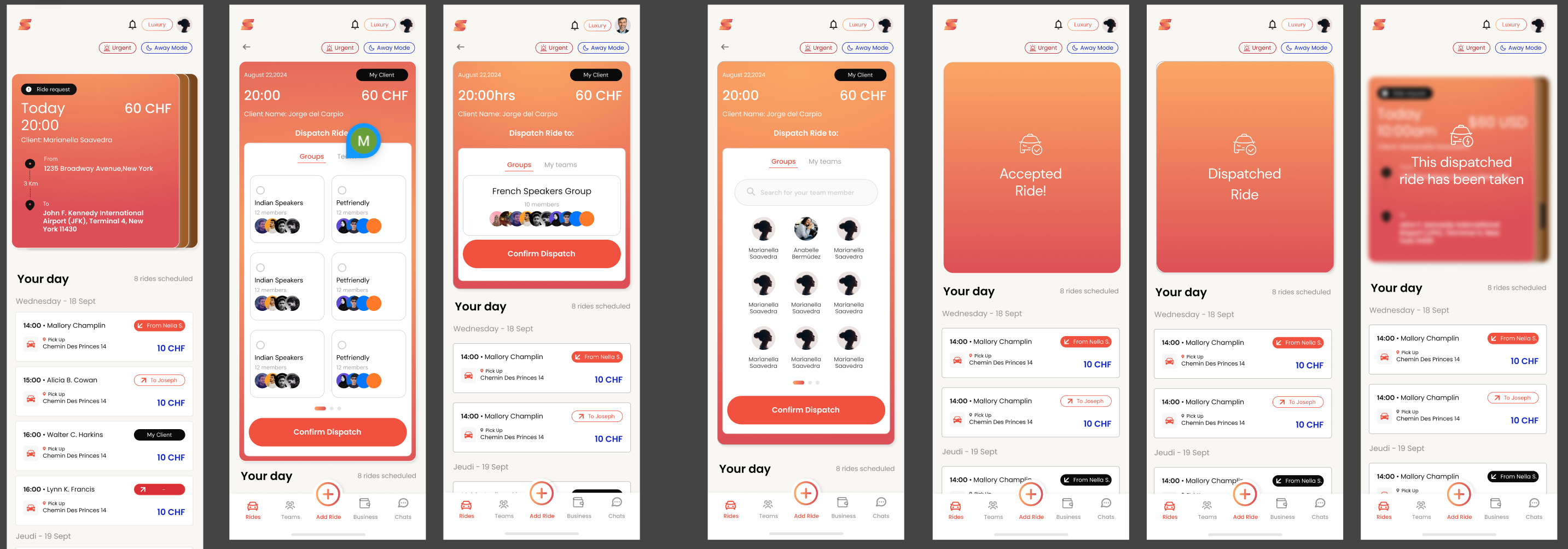

Top Low-Code Platforms for Effortless Application Development in 2024
What is Low-Code Development?
Low-code development is an application development method that elevates coding from textual to visual. It operates in a model-driven, drag-and-drop interface, making it accessible to all development skill levels. Unlike traditional development, which relies heavily on manual coding and writing each code line, low-code development abstracts and automates every step of the application lifecycle, allowing faster development cycles and easier maintenance.
Development is more accessible to users without deep technical expertise, but it still provides flexibility for professional developers to customize and scale applications. Unlike NoCode tools, which are more constrained by scalability, custom design limitations, and integrations, Low-Code platforms strike a balance between rapid development and high flexibility.
Understanding Low-Code Development Platforms
Low-code development tools are designed to make development more efficient for businesses and developers alike by offering features such as drag-and-drop interfaces, integration capabilities, and support for automation:
Accessibilité: Les utilisateurs professionnels sans compétences techniques peuvent créer des applications, tandis que les développeurs peuvent accélérer les tâches de codage.
Efficiency: By providing pre-built templates, drag-and-drop interfaces, and automatic integrations, low-code platforms streamline workflows.
Flexibilité: Les développeurs peuvent personnaliser les composants et intégrer des services tiers en fonction des besoins, ce qui permet une grande évolutivité et une personnalisation.
Compared to NoCode tools, Low-Code platforms are favored by large enterprises such as Decathlon, Schneider Electric, and Veolia because of their ability to handle complex projects, scalable architectures, and more advanced features.
Benefits of Low-Code Development
Speed and Efficiency: Low-code platforms significantly reduce development timelines by offering ready-to-use building blocks, automated workflows, and robust visual development capabilities. This user-friendly, drag-and-drop environment allows both novice and experienced developers to quickly create applications with modern interfaces and automation, significantly speeding up the development process compared to traditional methods.
Scalability: Unlike NoCode tools, Low-Code solutions can handle larger user bases and complex systems, making them suitable for enterprise-grade projects.
Customization: Developers can add custom code or integrate APIs for advanced features, making Low-Code ideal for projects requiring flexibility.
Cost Savings: Low-code platforms reduce the need for extensive coding, cutting development costs and freeing IT resources.
AI Integration: Many Low-Code platforms leverage Artificial Intelligence (AI) to automate tasks such as data processing, predictive analytics, and user personalization, further accelerating development.
Choosing the Right Low-Code Development Platform
When choosing a Low-Code platform, evaluate the following:
IDE collaboratif: Permet aux utilisateurs professionnels et aux développeurs de travailler ensemble.
Intégration des données: Capacité à se connecter à des bases de données, à des API et à des systèmes tiers.
Évolutivité et conception personnalisée: Convient à la gestion de projets à grande échelle et offre une personnalisation avancée.
Support Cloud et DevOps: Optimise le déploiement et la gestion du cycle de vie des applications web, mobiles et hybrides.
Top Low-Code Platforms for 2025
1. WeWeb
WeWeb is a leading low code app platform for building front-end interfaces quickly and efficiently. It offers a robust drag-and-drop builder for creating dynamic, responsive websites and web apps.
Caractéristiques:- Développement visuel de l'interface utilisateur avec une personnalisation poussée de la conception.
Integration with backend tools like Xano for advanced data management.
Prise en charge des intégrations API et des bases de données externes pour une plus grande flexibilité.
Use Case: At Kreante, we developed a Decathlon inventory management system using WeWeb for the front-end and Xano as the backend. This combination allowed for real-time data management, custom design, and scalability that traditional NoCode tools could not provide.

Another project, Simerse, leveraged WeWeb and Xano to create a dynamic platform with custom workflows and scalable architecture. AI tools were integrated to automate data analysis and user insights, enabling smarter decision-making.
2. Xano
Xano is a powerful backend Low-Code platform designed for app development, creating scalable APIs, and managing data securely.
Features:- No-code backend with fully customizable RESTful APIs.
Architecture évolutive adaptée aux projets d'entreprise.
Gestion intégrée de la base de données et sécurité de l'API.
Why Xano? Xano’s flexible backend capabilities make it an excellent pairing for front-end Low-Code tools like WeWeb and Flutterflow.
Use Case: In collaboration with WeWeb, Kreante used Xano to build Decathlon‘s scalable and secure backend, enabling real-time API calls for inventory updates. The platform ensured seamless performance and high reliability even during peak usage periods.
3. Flutterflow
Flutterflow is a Low-Code tool built on Flutter, enabling rapid development of mobile and web applications with near-native performance. Low code apps facilitate cross-platform development, allowing businesses to efficiently create applications without relying heavily on traditional programming.
Caractéristiques:
Constructeur visuel d'applications multiplateformes (iOS, Android et web).
Intégration de codes personnalisés pour une plus grande flexibilité.
Composants pré-construits et outils d'IA pour l'automatisation et l'accélération.
Cas d'utilisation: Kreante a utilisé Flutterflow pour développer deux projets majeurs :
Smartcab: Une plateforme de covoiturage nécessitant une interface utilisateur/UX réactive et des intégrations backend transparentes. Flutterflow nous a permis de construire un MVP entièrement fonctionnel en un temps record.

INSPO: Une application innovante de découverte de contenu qui nécessitait une personnalisation avancée et des intégrations d'API. L'utilisation de Flutterflow combinée à des fonctions de personnalisation pilotées par l'IA a permis d'accélérer la stratégie de mise sur le marché.
4. Supabase
Supabase is an open-source Low-Code backend platform that acts as an alternative to Firebase. It offers database management, authentication, and API creation for building scalable applications.
Caractéristiques:
Base de données PostgreSQL avec mises à jour en temps réel.
Authentification sécurisée, gestion des utilisateurs et intégrations API.
Open-source et extensible, ce qui le rend idéal pour les besoins de développement personnalisés.
Cas d'utilisation: Supabase est largement utilisé pour des projets nécessitant des fonctionnalités en temps réel et une authentification sécurisée des utilisateurs. Sa nature open-source permet aux développeurs de personnaliser les solutions tout en bénéficiant de services backend robustes.
5. Bubble
Bubble is a versatile No-Code/Low-Code platform that allows developers to build complex web applications without extensive coding. It combines drag-and-drop development with advanced functionality for scaling projects.
Caractéristiques:
Développement visuel d'applications web avec une logique entièrement personnalisée.
Vaste écosystème de plugins permettant d'ajouter des fonctionnalités avancées.
Intégrations flexibles avec des API et des outils tiers.
Why Bubble? Bubble bridges the gap between NoCode and Low-Code by offering a strong mix of visual development and technical flexibility. It is ideal for MVPs, SaaS applications, and data-driven platforms.
Cas d'utilisation: Bubble a été utilisé pour créer des plateformes SaaS, des places de marché et des applications web interactives qui nécessitent une logique et des intégrations avancées.
Differences Between Low-Code and NoCode Tools
Fonctionnalité | NoCode Tools | Low-Code Tools |
|---|---|---|
Évolutivité | Limité pour les grands projets | Hautement évolutif pour les entreprises |
Personnalisation | Limité aux modèles | Options avancées de code personnalisé |
Intégrations | Support API limité | Intégrations robustes avec des tiers |
Utilisateurs cibles | Utilisateurs non techniques | Utilisateurs professionnels et développeurs |
Caractéristiques de l'IA | Automatisation de base | Fonctionnalités avancées basées sur l'IA |
Code | Des solutions verrouillées | Dans certains cas, vous pouvez exporter le code |
Summary: While no code development platforms are ideal for small projects, MVPs, or proof-of-concept solutions and enable non-technical users to create applications, Low-Code tools like WeWeb, Xano, and Flutterflow offer enhanced scalability, customization, and integration capabilities. No code platforms focus on simplified interfaces and declarative programming, making them suitable for simple applications without the need for extensive coding knowledge. This makes Low-Code platforms a preferred choice for enterprises and complex projects.
Low-Code Development Use Cases
Low-code platforms can be used for a variety of real-world applications:
Applications Web: Sites web et portails évolutifs et réactifs.
Applications mobiles: Applications multiplateformes dotées de fonctions avancées.
Automatisation des entreprises: Automatisation des flux de travail et outils de gestion des données.
API: Création d'API sécurisées et évolutives pour les intégrations externes.
Exemples d'entreprises:
Decathlon: Inventory management system using WeWeb and Xano.
Schneider Electric: Solution interne d'entreprise pour les tableaux de bord et les systèmes de reporting.
Citizen Development and Low-Code
Citizen development is a growing trend in the world of low-code development. It refers to the practice of non-technical users, also known as citizen developers, creating applications without extensive coding knowledge. Low-code platforms have made it possible for citizen developers to build applications quickly and efficiently, without requiring the expertise of professional developers.
Low-code platforms provide a range of features that enable citizen developers to build applications, including drag-and-drop functionality, visual modeling, and reusable components. These features make it possible for citizen developers to focus on the business logic of the application, rather than the technical details.
Les avantages du développement citoyen sont notamment l'augmentation de la productivité, l'amélioration de la collaboration et l'accélération de la mise sur le marché. Les développeurs citoyens peuvent créer des applications qui répondent aux besoins spécifiques de leur entreprise, sans nécessiter l'intervention des services informatiques. Cela peut conduire à une agilité et une innovation accrues, ainsi qu'à une meilleure satisfaction des clients.
However, citizen development also raises some challenges, such as ensuring security and governance, and managing the complexity of applications. Low-code platforms must provide robust security and governance features to ensure that citizen-developed applications meet the required standards.
Low-Code Security and Governance
Low-code platforms must provide robust security and governance features to ensure that applications meet the required standards. This includes features such as access control, data encryption, and auditing. Low-code platforms must also provide tools for managing the complexity of applications, such as version control and testing.
Security is a critical concern for low-code platforms, as they often involve sensitive data and business processes. Low-code platforms must provide features such as authentication and authorization, data encryption, and secure data storage. They must also provide tools for monitoring and auditing, to ensure that applications are secure and compliant.
Governance is also an important consideration for low-code platforms. This includes features such as workflow management, approval processes, and change management. Low-code platforms must provide tools for managing the lifecycle of applications, from development to deployment.
The benefits of low-code security and governance include improved compliance, reduced risk, and increased trust. Low-code platforms can provide a secure and governed environment for building applications, which can lead to increased adoption and usage.
The Role of AI in Low-Code Development
AI is revolutionizing Low-Code platforms by enhancing development speed and capabilities:
Automatisation des flux de travail: L'IA permet d'automatiser les tâches répétitives telles que les tests, la validation des données et la création de flux de travail.
Predictive Analytics: Tools like Xano integrate AI to process and analyze large datasets for better decision-making.
Smart Features: AI-powered components, like chatbots and recommendation engines, can be easily integrated into apps built with Flutterflow and WeWeb.
By leveraging AI, Low-Code tools enable developers to build smarter applications in less time, meeting modern business demands efficiently. Low code apps allow non-technical users to rapidly develop applications, enhancing productivity and supporting digital transformation while freeing up IT resources for more complex tasks.
The Future of Low-Code Development Platforms
The future of low-code development platforms is exciting and rapidly evolving. As the demand for digital transformation continues to grow, low-code platforms are becoming increasingly popular. The market for low-code platforms is expected to grow significantly in the coming years, as more organizations adopt low-code development.
One of the key trends in low-code development is the increasing use of artificial intelligence (AI) and machine learning (ML). Low-code platforms are incorporating AI and ML features, such as predictive analytics and automated testing, to improve the development process.
Another trend is the growing importance of cloud-native low-code platforms. Cloud-native platforms provide a scalable and flexible environment for building applications, which can lead to increased agility and innovation.
The future of low-code development platforms also includes the increasing use of low-code platforms for complex applications, such as enterprise resource planning (ERP) and customer relationship management (CRM). Low-code platforms are becoming more sophisticated, and can handle complex applications that require multiple integrations and workflows.
Overall, the future of low-code development platforms is bright, and they are expected to play a major role in the digital transformation of organizations.
Conclusion
Low-Code development platforms are revolutionizing application development by combining the accessibility of NoCode tools with the flexibility of traditional coding. Tools like WeWeb, Xano, and Flutterflow empower businesses to create scalable, customizable, and AI-driven applications faster than ever before.
At Kreante, we have successfully delivered projects for Decathlon, Simerse, Smartcab, and INSPO using these Low-Code tools, showcasing their power in real-world scenarios. As enterprises like Schneider Electric, Veolia, and Decathlon continue to adopt Low-Code solutions, the future of software development is clear: faster, smarter, and more efficient.
By choosing the right Low-Code platform, businesses can innovate faster, reduce costs, and achieve unprecedented digital transformation.

Accélérer le développement de logiciels avec Vibe Coding et les outils d'IA chez Kreante

Kreante: Accelerating Your AppDevelopment with Low-Code, AI, and “Vibecoding”




.png)
